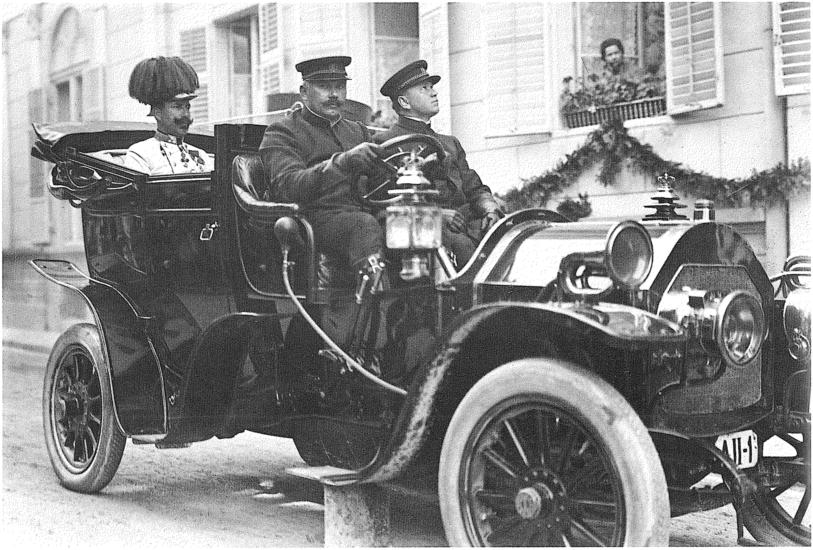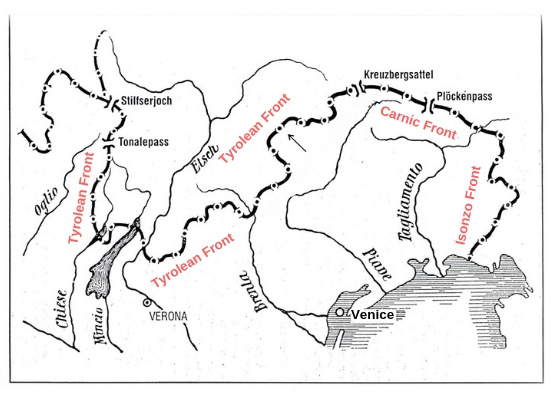Italian front 1915-1917 along the Isonzo river - 2021
2. Declaration of war
For Austria-Hungary, the Italian declaration of war meant the emergence of a new front with another dispersal of forces on several battlefields. The Austrian border with Italy was poorly fortified by territiorial defense untis in a situation where the main forces of the army were tied down to the eastern and Balkan fronts. Territorial defense units were formed by the Tyrolean k. k. Landeschützen along with other volunteer shooting units, Landsturm march battalions, a few cavalry squadrons, and less than fifty artillery batteries. That is why Armeeoberkommando1, the General Staff of the k. u. k. Army, urgently decided to establish the Southwest Front, under the command of Archduke Eugen.
Archduke Eugen von Habsburg - Lothringen

Source:
https://en.wikipedia.org/wiki/Archduke_Eugen_of_Austria#/media/File:Archduke_Eugen_in_Ischl.JPG
The Italian front was stretched over 650 km along the entire Italian-Austrian border and was divided into 3 fronts. In the northwest was the Tyrolean Front, commanded by General Viktor Dankl. The northern Carnic Front covered the ridges of the Carnic and Julian Alps and was entrusted to Franz Rohr. To the southeast in the Küstenland2 the Isonzo Front stretched along the Isonzo River and was commanded by Svetozar Boroević von Bojna. At the Tyrolean front, the high mountain stretches were mostly occupied by mountain troops, and the war consisted of isolated battles for conquering peaks and passes. The first offensive operation in Venice (the so-called “Strafexpedition“) was here unsuccessfully attempted by Franz Conrad von Hötzendorf in the spring of 1916.
1 abbreviation of AOK
2 Austrian Littoral
Source:
ŠEDIVÝ, I.: Češi, české země a Velká válka 1914-1918, Prague 2001.
Map of Italian Front

Source:
ČEPELKA, M.: Fronta v Dolomitech, Lysá nad Labem 1993.
